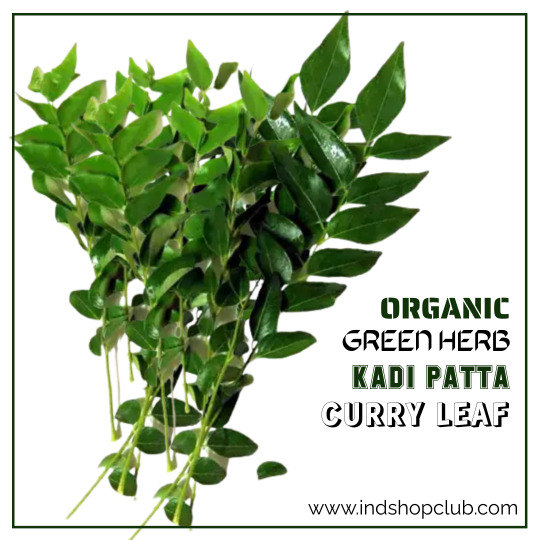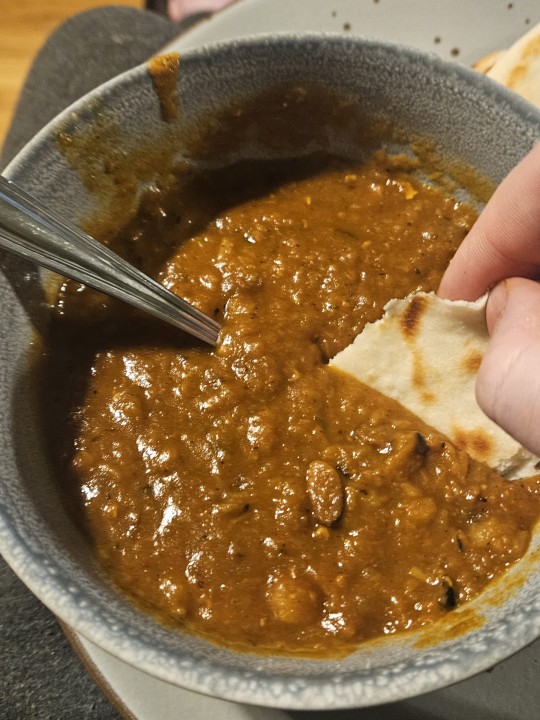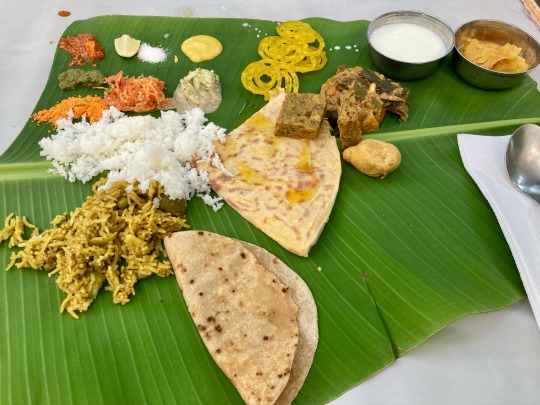#curry leaf
Text
From the same economy rice stall as yesterday, is this box of Takeaway Dinner. I picked totally different dishes from last night’s meal. Sliced and fried then stewed potato, silky soft egg tofu and fried chicken with plenty of curry leaves in a sweet and creamy glaze.

#Dinner#Takeaway#Packed#Economy Rice#菜饭#Cai Png#Potato Stew#Egg Tofu#Bean Curd#Fried Chicken#Creamy#Sweet#Curry Leaf#White Rice#Food#Buffetlicious
35 notes
·
View notes
Text

Prawn Patia
2 Tbsp. vegetable oil
10 curry leaves
1 small onion, finely chopped (about 1 cup)
2 small green chilis (such as Thai bird) chopped fine
½ cup tomato purée
1 Tbsp. ginger garlic paste
1½ tsp. red chili powder (cayenne powder)
½ tsp. turmeric powder
1 tsp. cumin powder
½ tsp. granulated sugar or grated jaggery
1½ Tbsp. vinegar (preferably palm vinegar)
2 Tbsp. water
kosher salt
1 cup medium shelled, deveined shrimp
1 Tbsp. chopped cilantro leaves
Heat oil in a large skillet over medium-high heat until shimmering. Gently put in the curry leaves and step aside as they pop. Stir for 20 seconds. Add the chopped onions and stir until lightly browned, about 5 minutes. Add the green chilies and stir for another minute. Add the tomato puree and keep stirring until oil separates from the onion tomato mix, about 5 minutes. Add the ginger-garlic past, red chili, turmeric, and cumin, and keep stirring until mixture is fragrant, about 5 minutes, taking care to ensure the mixture doesn't stick to the bottom.
Add the sugar/grated jaggery, vinegar, and water and cook till the rawness of the tomato is gone, about 5 minutes. Season to taste with salt. Add the shrimp, stir and let cook for one minute. Remove from heat. Allow to continue cooking off heat, stirring occasionally, until shrimp are cooked through, about 4 minutes longer. Garnish with coriander and serve with white rice and daal.
#angelkin#food#dinner#dairy free#gluten free#pescatarian#curry leaf#vegetable#onion#pepper#tomato#ginger#garlic#cayenne pepper#turmeric#cumin#jaggery#vinegar#seafood#shrimp#cilantro#dragonkin#mountainkin#pantherkin#pheonixkin#winter
3 notes
·
View notes
Text
The Production and Versatile Uses of Curry Leaf Plant
The curry leaf plant, also known as Murraya koenigii, is not only a staple in South Asian and Southeast Asian cuisines but also a versatile herb with numerous applications beyond the kitchen. In this article, we will explore the cultivation and production of the curry leaf plant and delve into its diverse range of uses, both culinary and non-culinary.
Cultivating the Curry Leaf Plant
Before we can dive into the various uses of the curry leaf plant, it's essential to understand how to cultivate and nurture this valuable herb.
Selecting the Right Location
Curry leaf plants thrive in warm and tropical climates, and they require plenty of sunlight. Choose a location that receives at least 4-6 hours of direct sunlight each day, whether it's in your garden or a pot on your balcony.
Soil and Potting Mix
Select well-draining soil or a potting mix that provides good aeration. Mixing regular garden soil with organic compost is an excellent choice. Ensure that your pot or container has adequate drainage holes to prevent waterlogging.
Watering and Fertilizing
Consistent and adequate watering is crucial for the curry leaf plant. Keep the soil consistently moist but not waterlogged. Fertilize your plant with a balanced, water-soluble fertilizer every two weeks during the growing season to promote healthy growth.
The Versatile Uses of the Curry Leaf Plant
Now, let's explore the wide array of applications for curry leaf beyond its culinary uses.
Culinary Delights
1. Flavorful Seasoning: Fresh curry leaves are renowned for their aromatic and distinct flavor. They are a fundamental ingredient in various South Asian and Southeast Asian dishes, adding a unique taste to curries, rice, and lentil preparations.
2. Cooking Oil Infusion: Curry leaves can be used to infuse cooking oils, creating a fragrant base for frying or sautéing ingredients. This technique imparts a delightful flavor to the oil and, subsequently, the dish.
Medicinal Properties
1. Traditional Remedies: In traditional medicine, curry leaves have been used for their potential health benefits. They are believed to aid in digestion, help manage diabetes, and possess anti-inflammatory and antioxidant properties.
2. Hair Care: Curry leaves are also valued for their role in promoting hair health. They are used in various hair care products to address issues such as dandruff, hair loss, and premature graying.
Aromatherapy
1. Aromatic Oils: The essential oil extracted from curry leaves is used in aromatherapy to reduce stress, anxiety, and promote relaxation. It can be diffused or used in massage oils.
Ornamental and Landscaping
Curry leaf plants can serve as attractive ornamental additions to your garden or landscaping. Their vibrant green foliage and fragrant leaves make them an aesthetically pleasing choice.
Conclusion
The curry leaf plant, with its rich history in culinary traditions and versatile applications, has earned a well-deserved place of honor in kitchens and gardens around the world. Its aromatic leaves and potential health benefits continue to make it a valuable addition to various aspects of our lives.
Whether you're using curry leaves to add a burst of flavor to your favorite dish, harnessing their health properties, or simply enjoying their beauty in your garden, the curry leaf plant proves to be a truly versatile and indispensable herb. Embrace the many dimensions of this herb to enhance your culinary experiences and well-being.
FAQs
Can I grow curry leaf plants in a pot or container?
Yes, curry leaf plants can thrive in pots or containers as long as they receive adequate sunlight and have well-draining soil.
What are the potential health benefits of consuming curry leaves?
Curry leaves are believed to aid digestion, have anti-inflammatory and antioxidant properties, and may help manage diabetes.
How can I use curry leaves for hair care?
Curry leaves can be used in hair masks, oils, or shampoos to promote hair growth, reduce dandruff, and prevent premature graying.
Are curry leaf plants easy to maintain?
With proper care, curry leaf plants can be relatively easy to maintain. They require sunlight, well-draining soil, and regular watering and fertilizing.
Can I use dried curry leaves in cooking?
While fresh curry leaves are preferred for their flavor, dried curry leaves can be used in a pinch. However, they may not provide the same intensity of aroma and taste.
#curry leaf#curry leaf plant#curry leaves#curry tree#curry tree fertilizer#curry plant#curry oil#curry paste#curry recipe#curry#curry powder#curry tree leaves#curry plant benefits#curry leaf benefits#Curry leaf uses
2 notes
·
View notes
Text
Curry leaves are full of many qualities

0 notes
Text
Curry Leaf Farming: करी पत्ते की खेती यानी सालों-साल कमाई का ज़रिया
करी पत्ता का पौधा एक बार लगाने के बाद 10-15 साल तक देता है पैदावार
करी पत्ता एक ���स्ता और स्वास्थ्यवर्धक मसाला है जो औषधीय गुणों से भरपूर है। इसीलिए करी पत्ते की खेती में हमेशा जैविक खाद का इस्तेमाल करना चाहिए। इसकी माँग पूरे साल रहती है। इसके कच्चे और मुलायम पत्ते, पके हुए पत्तों की तुलना में ज़्यादा क़ीमती और उपयोगी होते हैं। इस पर रोग-कीट का प्रकोप भी बहुत कम पड़ता है।

करी पत्ते की खेती से वैसा ही व्यावसायिक लाभ मिलता है, जैसा तमाम औषधीय उपज और मसालों की खेती या फलों की बाग़वानी से होता है, क्योंकि करी पत्ते का पौधा एक बार लगाने से इसकी पत्तियों की उपज 10 से 15 साल तक मिलती रहती है।
करी पत्ता एक सस्ता और स्वास्थ्यवर्धक मसाला है जो औषधीय गुणों से भरपूर है। इसीलिए इसकी पैदावार में हमेशा जैविक खाद का इस्तेमाल करना चाहिए। इसकी माँग पूरे साल रहती है। इसके कच्चे और मुलायम पत्ते, पके हुए पत्तों की तुलना में ज़्यादा क़ीमती और उपयोगी होते हैं। करी पत्ते के पौधों की कटाई हर तीसरे महीने की जाती है। इस पर रोग-कीट का प्रकोप भी बहुत कम पड़ता है।
करी पत्ते को मीठी नीम भी कहते हैं, क्योंकि इसकी पत्तियाँ नीम की पत्तियों से काफ़ी मिलती-जुलती नज़र आती है। लेकिन ये नीम की तरह कड़वी नहीं होतीं। करी पत्ते के पेड़ की लम्बाई 14 से 18 फ़ीट तक हो सकती है। लेकिन चूँकि इसकी पत्तियों की माँग ज़्यादा रहती है इसीलिए पेशेवर किसान करी पत्ते के पेड़ की लम्बाई को करीब 2.5 मीटर तक ही बढ़ने देते हैं। किसान ध्यान रखते हैं कि करी पत्ते के पेड़ पर फूल बनने की नौबत नहीं आये क्योंकि फिर इस पेड़ का विकास रुक जाता है।

करी पत्ते का इस्तेमाल
दक्षिण भारतीय व्यंजनों में तो सदियों से करी पत्ते का इस्तेमाल बहुतायत से होता रहा है, लेकिन अब इसके गुणों के प्रति लोगों में जागरूकता बढ़ने से देश के अन्य इलाकों के भोजन में भी इसकी माँग बढ़ती जा रही है। इसीलिए करी पत्ते की खेती में देश भर के किसानों के लिए आमदनी का एक शानदार और नियमित ज़रिया बनने की ख़ूबियाँ हैं। करी पत्ता न सिर्फ़ भोजन का स्वाद और खुशबू बढ़ाता है, बल्कि इसके अनेक स्वास्थ्यवर्द्धक लाभ भी हैं। इसीलिए करी पत्ता का रोज़मर्रा में जहाँ ख़ूब घरेलू इस्तेमाल होता है, वहीं साबुन निर्माण में इसके सुगन्धित अर्क की औद्योगिक माँग भी रहती है। इसे सब्जियों की तरह आसानी से बाज़ार में बेचा और ख़रीदा भी जाता है।
और पढ़ें.........
0 notes
Text


Severe damage to curry leaves due to red spider mite
0 notes
Text
Curry leaves are widely used in many countries traditional meals, they are very much use in cooking and medicine, it’s a small green leaf with distant flavor and fragrance, they have numerous medicinal and nutritional benefits as well as cosmetic uses also.
I'm going to discuss several incredible curry leaf benefits in this article, and I'm confident they'll persuade you to include them in your diet.
1. ANTI-DIABETIC PROPERTIES
The high fiber content in curry leaves shows how quickly carbohydrates are broken down into glucose, which helps regulate blood glucose levels. It helps the body produce more insulin, which has a hypoglycemic effect and controls blood sugar levels.
How to use curry leaves to control blood sugar
For blood control, you have to chew 8 to 10 curry leaves in the morning on an empty stomach, be sure you chew well to get the benefits, the curry leaves must mix well with your saliva, or you can make a juice of curry leaves and drink it in the morning before breakfast.
2. HAIR GROWTH
Curry leaves moisturize the scalp, strengthen hair follicles, and encourage hair development, in addition to preventing premature graying of hair and protecting your hair from damage. Curry leaves also protect against dandruff, itchy scalp and hair loss.
How to use curry leaves for hair growth
Ingredients
Curry leaves 20 to 30
Coconut oil 3 tablespoons
Preparation
Wash 20 to 30 curry leaves, and then add the curry leaves and 3 tablespoons of coconut oil to a pan, and heat the mixture until the leaves are completely black. Your hair tonic is now ready; simply turn off the gas and let the oil cool to room temperature. Apply this oil on your scalp and hair twice a week to get healthy and shiny hair.
3. WEIGHT LOSS
Curry leaves provide detoxifying molecules and aid in cleansing your bodies because they include substances called carbazole alkaloids, which prevent weight gain and lower blood levels of LDL, a type of bad cholesterol, and helps you with weight loss. Read more
#curry leaves#curry leaf#curry leaves benefits#beauty#health & fitness#home remedy tips#natural home remedies#skin beauty#skin tips#beauty remedies#diy#glowing#hair dandruff#hair problems#hair growth#curry leaves oil#curry leaves mask#homemade face pack#immune system#booster#immunity booster#boost immune system#boost immunity#health and beauty#healthy skin#health#hair oil#homemade hair oil#homemade remedies for skin#easy way to lose weight
1 note
·
View note
Photo

ORGANIC GREEN HERB KADI PATTA CURRY LEAF
🌸 FREE HOME DELIVERY 🌸
🌸 Nutrients such as iron, calcium, protein, vitamin B1, vitamin B2, vitamin C, vitamin A are found in curry leaves. In addition, curry leaves have anti-diabetic, anti-oxidant, anti-microbial properties.
🌸 Curry leaves contain numerous anti-inflammatory chemicals, and studies have indicated that curry leaf extract can help reduce inflammation-related genes and proteins.
🌸 Curry leaf extract was shown in studies to help decrease high blood sugar levels and protect against diabetic symptoms such as nerve pain and kidney damage.
Order Now - https://indshopclub.com/product/organic-green-herb-kadi-patta-curry-leaf/
करी पत्ता के फायदे (Benefits Of Curry Patta): https://indshopclub.com/benefits-of-curry-patta/
🌸 All India Delivery. Stay Home, Stay Safe
🌸 Cash On Delivery Available Now
🌸 Shop Now, Pay Later
लोकल बनाएं लोकल अपनाएं
www.indshopclub.com
0 notes
Text

Vegan Jamaican Bowl
#vegan#lunch#dinner#jamaican cuisine#caribbean cuisine#rice bowl#rice#beans#mango#bell peppers#red onion#cilantro#lime#black pepper#sweet potatoes#jamaican jerk seasoning#collard greens#curry#ginger#garlic#scotch bonnet peppers#apple cider vinegar#thyme#coconut milk#allspice#bay leaf#eat the rainbow
47 notes
·
View notes
Text

Lentils and wheat are a complete protein!
#its got potato tomato and onion as the veggies#and tumeric garam masala corriander cumin amchur paprika ginger and garlic bay leaf and a couple curry leafs in there
17 notes
·
View notes
Text
It is back to Vegetarian Rice (斋饭) for breakfast when mum’s not going to the market. There are more “kentang” (potato in Malay) than mock mutton in today’s curry mutton dish. In the middle, stewed fried bean curds with black fungus. The final dish is the creamy and sweet imitation pork with curry leaves.

#Vegetarian Rice#斋饭#No Meat#Mock Meat#Imitation Meat#Mutton#Curry#Potato#Spicy#Fried Bean Curd#Tofu#Stewed#Black Fungus#Creamy#Sweet#Pork#Curry Leaf#White Rice#Breakfast#Food#Buffetlicious
35 notes
·
View notes
Text

Mudra Cafe / Ubud, Bali, Indonesia
Smokey vegan kerala banana leaf curry with soy meat, portobello mushrooms, keluak seeds and truffle oil in a galangal gravy
#mudra#Mudra cafe#vegan#veganism#what vegans eat#vegan food#vegan eats#vegan travel#ubud#vegan ubud#ubud vegan#Bali#Bali vegan#vegan Bali#Indonesia#Indonesia vegan#vegan Indonesia#curry#banana leaf#banana leaf curry#vegan curry#soy meat#vegan meat#portobello
22 notes
·
View notes
Text
Add Some Flavor to Your Garden: Growing and Taking Care of Curry Trees at Home!
Do you dream of adding a touch of exotic flavor to your garden and kitchen? Cultivating curry trees at home can be a rewarding and aromatic experience. In this article, we'll guide you through the process of selecting the right curry tree variety, preparing your garden, planting saplings, and caring for these delightful trees. We'll also explore how to harvest and use curry leaves in your cooking, the benefits of having your own curry tree, and much more.
Selecting the Right Curry Tree Variety
Before you start your curry tree cultivation journey, it's essential to choose the right variety. There are various types of curry trees, such as the Indian curry tree (Murraya koenigii), the Cambodian curry tree (Murraya paniculata), and the sweet neem curry tree (Bergera koenigii). Consider factors like climate, available space, and your personal preferences when making your selection.
Preparing the Garden
To ensure healthy growth, you need to prepare your garden adequately. Curry trees thrive in well-drained soil with lots of sunlight. Select a sunny spot with good drainage. Ensure the soil is rich in organic matter and slightly acidic. This provides an ideal environment for your curry tree to flourish.
Planting Curry Tree Saplings
Planting curry tree saplings is a straightforward process. Make sure to dig a hole large enough to accommodate the roots of your sapling. The spacing between saplings should be around 3-5 feet. Water them regularly, keeping the soil consistently moist, but not waterlogged.
Caring for Curry Trees
Caring for curry trees involves regular pruning, fertilizing, and pest control. Prune the branches to maintain the desired shape and size of the tree. Fertilize with a balanced fertilizer every 2-3 months. Keep an eye out for pests and use natural remedies to protect your curry tree.
Harvesting Curry Leaves
Harvesting curry leaves is an enjoyable task. The best time to pick the leaves is in the morning when they are fresh. Gently pluck the leaves and use them in your culinary adventures. The fragrance and flavor they add to your dishes are unparalleled.
Using Curry Leaves in the Kitchen
Curry leaves are a staple in many Indian and Southeast Asian dishes. They add a unique aroma and flavor to curries, soups, and more. Try out some delicious curry recipes and discover how curry leaves can elevate your cooking.
Curry Tree Maintenance
Long-term maintenance is crucial for healthy curry tree growth. Ensure they are protected from extreme weather conditions, especially during frosty winters. Proper care and attention will ensure that your curry trees thrive for years to come.
Benefits of Cultivating Curry Trees
Cultivating curry trees at home comes with numerous advantages. You'll have a constant supply of fresh curry leaves, saving you trips to the grocery store. Additionally, these trees can be an attractive addition to your garden.
Popular Curry Varieties
Now that you have your own source of fresh curry leaves, it's time to explore various curry recipes. From classic Indian curries to Thai and Malaysian dishes, you can experiment with different flavors and techniques.
Sustainability and Environmental Impact
Cultivating curry trees at home can be a sustainable choice. You reduce your reliance on store-bought herbs, which often come packaged in plastic. Additionally, growing your own curry tree contributes to a greener environment.
Curry Trees as Decorative Plants
Apart from their culinary and aromatic uses, curry trees can also be used for ornamental purposes. Their lush, green foliage and aromatic leaves can enhance the aesthetics of your garden.
Medicinal Uses of Curry Leaves
Curry leaves are not just for cooking; they have medicinal properties as well. They are known to aid in digestion, promote hair growth, and have antioxidant properties. Incorporating them into your diet can have numerous health benefits.
Cultural Significance
In many cultures, curry trees hold traditional and cultural importance. They are often considered auspicious and are used in various rituals and ceremonies.
Conclusion
Cultivating and nurturing curry trees at home can be a fulfilling and practical addition to your garden. It provides you with a consistent supply of fresh curry leaves for your kitchen, contributes to a sustainable lifestyle, and offers numerous health benefits. The cultural significance and aesthetic appeal of curry trees make them a valuable addition to any garden.
FAQs
1. Can I grow curry trees in a pot on my balcony?
Yes, you can grow curry trees in pots, but make sure they receive sufficient sunlight and proper care.
2. How long does it take for a curry tree to start bearing leaves?
Curry trees usually start producing leaves within a few months to a year after planting.
3. Are curry leaves and curry powder the same thing?
No, they are not the same. Curry leaves are fresh, aromatic leaves, while curry powder is a spice blend.
4. Can I grow curry trees in a cold climate?
Curry trees are tropical plants, so they may not thrive in cold climates. Consider indoor cultivation if you live in a cold area.
5. What are some common pests that affect curry trees, and how can I deal with them?
Common pests include aphids and mealybugs.
#curry leaf#curry tree#curry tree fertilizer#curry leaves#curry paste#curry powder#curry leaf plant#curry plant#curry plant benefits
0 notes
Text
probiotics are not enough I need to eat a petri dish
35 notes
·
View notes
